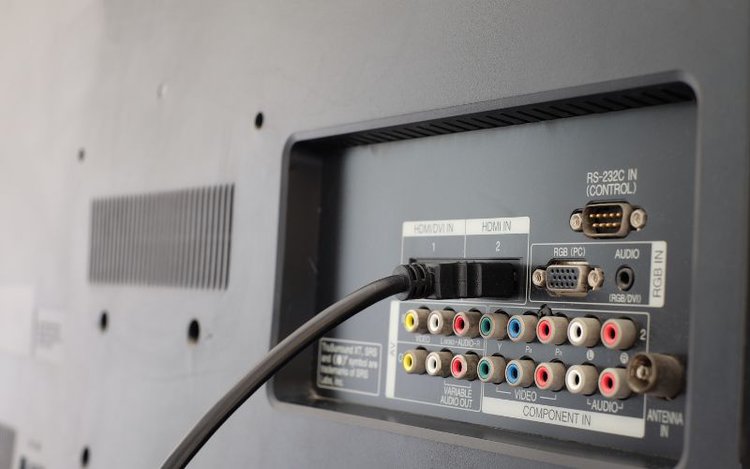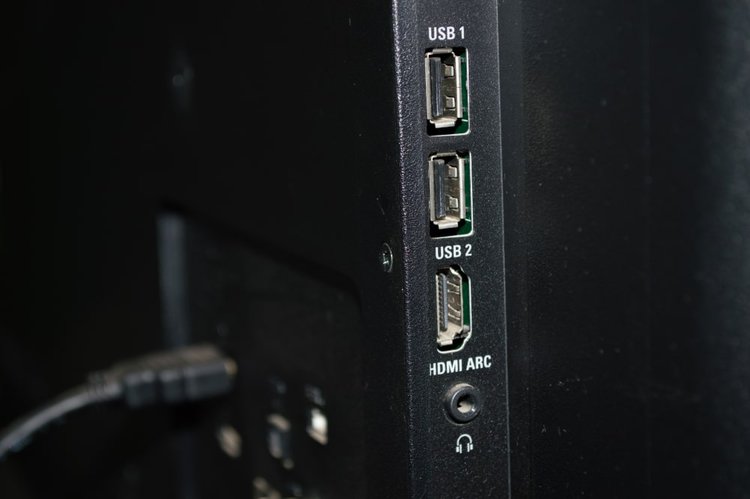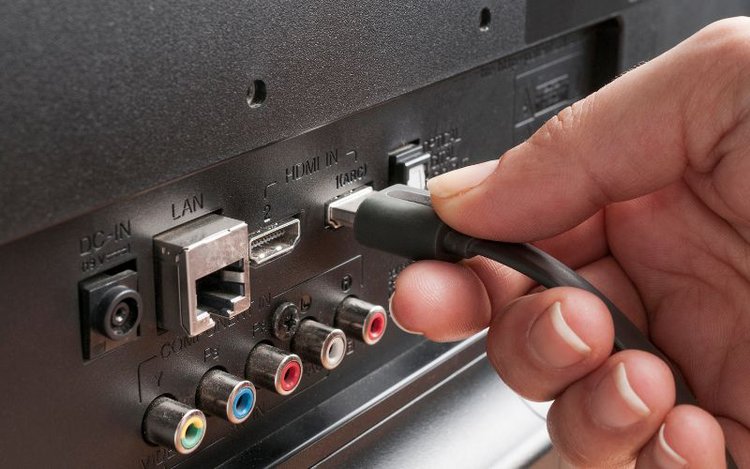TV HDMI Port 1 vs. 2: Understanding the Differences & Which You Should Use

What To Know
- HDMI ports on TVs are not designated for specific devices. Your TV should be set to the HDMI port that your source device is connected to, regardless of whether it’s HDMI 1 or HDMI 2.
- The choice of HDMI port can impact data transmission and audio quality, with HDMI 2.0 and 2.1 supporting advanced features like ARC/eARC and higher video resolutions.
- Switching between HDMI 1 and HDMI 2 can be done using a TV remote or the TV’s control panel.
Navigating HDMI 1 and HDMI 2 on your TV doesn’t have to be a puzzle.
Let’s demystify these ports together, ensuring you’re connected right every time for the best viewing experience.
Quick Navigation
Should My TV Be on HDMI 1 or HDMI 2?

Rule of thumb: Your TV should be on the HDMI port that your source device is connected to.
On high-end TVs, you’ll find two or three HDMI ports labeled “HDMI 1,” “HDMI 2,” and “HDMI 3.”
If you’re unfamiliar with the HDMI connector, you may think that each HDMI port is designated for a specific device. However, this is not the case; you can use any one of them for any device.
The labels are only there so that when you switch between input sources on your TV, you’ll be able to tell what port represents your desired source.
Set your TV on HDMI 1 if your input device is in the HDMI 1 port. If the input device is on the HDMI 2, set your TV on HDMI 2.
It’s that simple!
If your input device is on HDMI 2 and your TV is on the HDMI 1 input source, the screen will remain blank because the TV is not receiving any signals from that source.
You’ll need to pay more attention to your HDMI connectors if you want to use a special function. One or two of the HDMI ports on HD and 4K TVs often support special functions.
We’ll explain in the next section.
Does It Matter Which HDMI Port I Use on My TV?
Yes, it matters. If you want high-speed data transmission and high-quality audio, your choice of HDMI port can impact that.
Picture this.
It’s game night, and you want to connect your Xbox to your TV — nothing complicated. You also have an external speaker connected to the TV for louder audio delivery.

In this scenario, the HDMI port you choose makes little difference and doesn’t really matter.
On the other hand, it matters if you’re using an AV receiver or soundbar as your media hub.
The HDMI ports on high-end TVs often come in different HDMI versions; HDMI 1.4 (standard ports), HDMI 2.0, and HDMI 2.1.
HDMI 1.4 or above supports ARC but only HDMI 2.1 or above eARC feature. These HDMI functions allow you to send and return audio on one HDMI cable.
HDMI ARC eliminates the need for an extra audio cable running from your TV to the soundbar and supports high audio quality.

However, before using the ARC (or eARC) function, you need to run your HDMI cable between two ARC-enabled connectors.
The question is: How do you tell which HDMI port on your TV supports ARC or eARC?
Often, you can tell the ARC port on your TV from its label: “ARC” or “eARC.” Other times, they’ll bear the generic HDMI 1, 2, or 3 labelings and keep you guessing.
If you’re unsure which HDMI ports support the ARC or eARC functions, check the manufacturer’s manual to see which port is HDMI 2.0 or 2.1.
HDMI 2.0 and 2.1 support high transmission speeds for videos in 4K and 8K resolutions. HDMI 2.1 also supports new gaming features like VRR, ALLM, and QMS. In comparison, the standard version — HDMI 1.4 — is lacking.
Hence, if you’re particular about HDMI ARC, eARC, or high audio quality, the HDMI port you use matters.
How To Switch From HDMI 1 to HDMI 2

When you connect a source device to your TV, you’ll have to set your TV to the corresponding input source. Standard options include AV, TV, HDMI, and Component.
Some TVs have an automatic source selector, but you’ll still have to manually switch between HDMI ports when you have source devices connected.
To switch from HDMI 1 to HDMI 2, you can either use your TV’s remote controller or the buttons on the TV panel. The following sections detail the stepwise processes.
1. With a Remote
Step 1: Plug your TV into a power outlet and power it on with the remote.
Step 2: Connect your source device (i.e., Roku streaming stick) to the HDMI 2 port on your TV.
Step 3: Press the “Input” or “Source” button on the TV remote to display the name of the current input source.
Step 4: Continue pressing the button to switch from one source to another.
After the screen displays HDMI 1, HDMI 2 will come up next. Stop pressing the button to select HDMI 2.
NOTE: On some TVs, a selection screen will pop up when you press the “Input” button. Use the arrow buttons to navigate through the input options on the screen and select HDMI 2.
Ensure that the batteries in your remote are good and correctly placed; otherwise, your commands won’t work.
httpv://www.youtube.com/watch?v=–tSo5HVx2g
2. Without a Remote
In situations where you cannot use your TV remote, you can switch input sources through the control panel on your TV.
The control panel is usually in the front or at the side of the TV. It includes buttons that control essential functions like power, volume, channel, and input source.
Below are the steps to take:
Step 1: Plug your TV into a power outlet and press the Power button on the TV.
Step 2: Connect your source device to the HDMI 2 port on your TV.
Step 3: Press the “Input” button on the TV’s control panel to display the current input source.
The Input button often carries the image of an arrow in a box or square.
Step 4: Continue pressing the button until you get to HDMI 1 and then HDMI 2.
Stop pressing the button, and in a few seconds, your TV screen will display the source device’s homepage. Enjoy!
Conclusion
The HDMI 1 and HDMI 2 ports on your TV are the same. You can use them to connect to any HDMI device.
However, in high-end TVs, the HDMI version of both ports may differ. The connector port with the higher HDMI version often supports special functions such as ARC and eARC.
Check the port labels or manufacturer’s manual to tell both ports apart. After connecting to your desired port, follow the guide in this article to switch your TV to HDMI 1 or HDMI 2.
Gabriella ‘Diogo is a technical writer with a vested interest in tech hardware and equipment. She shares her knowledge and processes in an easy-to-grasp, lighthearted style. When she’s not testing or researching device performance, you’ll find her writing short stories or rewatching episodes of her favorite sitcoms.

